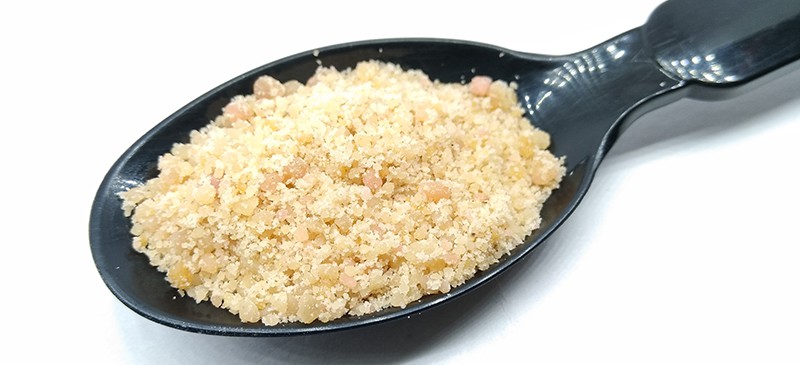This Dr. Axe content is medically reviewed or fact checked to ensure factually accurate information.
With strict editorial sourcing guidelines, we only link to academic research institutions, reputable media sites and, when research is available, medically peer-reviewed studies. Note that the numbers in parentheses (1, 2, etc.) are clickable links to these studies.
The information in our articles is NOT intended to replace a one-on-one relationship with a qualified health care professional and is not intended as medical advice.
This article is based on scientific evidence, written by experts and fact checked by our trained editorial staff. Note that the numbers in parentheses (1, 2, etc.) are clickable links to medically peer-reviewed studies.
Our team includes licensed nutritionists and dietitians, certified health education specialists, as well as certified strength and conditioning specialists, personal trainers and corrective exercise specialists. Our team aims to be not only thorough with its research, but also objective and unbiased.
The information in our articles is NOT intended to replace a one-on-one relationship with a qualified health care professional and is not intended as medical advice.
Asafoetida: The Ancient Roman Spice with Health Benefits
February 24, 2020

Back in the days of the Roman Empire, there was a substance used to naturally cure health problems ranging from respiratory troubles to hysteria. Today, it’s still used in modern herbalism for treating hysteria, some nervous conditions, as well as bronchitis, asthma and whooping cough. It’s called asafoetida, and there’s some evidence it acts as an antispasmodic, expectorant, natural laxative, digestive aid and sedative.
A crucial ingredient in Indian cooking, asafoetida is often used to flavor vegetarian dishes, such as those made with lentils and cauliflower. While some initially find it’s smell off-putting, when heated it evokes a flavor similar to an onion or a leek.
Medicinally speaking, some studies have found that chemicals in asafoetida may help treat irritable bowel syndrome (IBS), which now affects over 10 percent of the population globally. But that’s not all. This resinous gum has a host of health benefits that I share below.
What Is Asafoetida?
Asafoetida (pronounced as-uh-fet-i-duh) is defined as a hard, resinous gum derived from a perennial fennel plant with the species name Ferula asafoetida. When used as a spice — mostly commonly in Iranian and Indian cooking — it’s made from dried sap extracted from the stem and roots of a plant species that belongs to the carrot family.
The Asafoetida tree is grayish-white when fresh, but darkens with age to a yellow, red and eventually brown color. The resin is difficult to grate and is traditionally crushed between stones or with a hammer.
Today, the most commonly available form is compounded asafoetida powder, a fine powder containing 30 percent asafoetida resin along with rice flour and gum arabic.
Other names that this spice/extract goes by include: foods of the gods, jowani badian, stinking gum, Devil’s dung, hing, hengu, ingu, kayam and ting.
Nutrition Facts
In supplement form, this substance is composed of approximately 4 percent to 20 percent volatile oil, 40 percent to 60 percent resin, and 25 percent gum.
The essential oil component of ferula asafoetida contains a variety of odorous compounds with a high percentage of these odorous compounds containing sulfur. Phytochemicals including pinene, cadinene and vanillin are found in the oil, while umbelliferone, asaresinotannol, foetidin, kamolonol and ferulic acid are found in the resin.
Using a pinch of asafoetida in a recipe will only add about one calorie to your meal without any fat, cholesterol, sodium or sugar.
What does asafoetida taste like? It isn’t very pleasant on its own — since it’s described as having a concentrated rotten garlic and/or onion flavor. However, once it’s cooked, it adds a pleasant onion or leek-like flavor to dishes.
Why is asafoetida used in cooking? As explained more below, it can help make certain foods that contain carbohydrates more digestible, reducing side effects like bloating and gas, plus it supports healthy blood sugar levels.
Health Benefits
1. Asthma Relief
As a potent respiratory stimulant and expectorant, asafoetida may help release phlegm and relieve chest congestion. It’s used in traditional medicine for asthma, whooping cough and bronchitis.
The volatile oil in the asafoetida gum is eliminated through the lungs, which is why it can be an excellent treatment for asthma and other lung-related issues.
2. Lowers Blood Pressure
Asafoetida is a natural blood thinner and can help to lower blood pressure. It’s packed with coumarin, a compound that aids in improving your blood flow and thinning your blood, thereby potentially preventing blood clots.
Scientists have been able to isolate certain phytochemicals in the Ferula species that have helpful cardiovascular effects. Research using animal subjects has shown that Ferula asafoetida gum extract significantly reduces average arterial blood pressure. The gum extract seems to contain relaxant compounds that have a positive effect on blood pressure and cardiovascular health in general, thanks in part to these phytonutrients.
3. Helps Treat IBS
Asafoetida has been studied and found to be a successful homeopathic remedy for those suffering from IBS symptoms, such as diarrhea and constipation, intestinal gas, bloating and cramping.
A 14-week, double-blind study treated IBS sufferers people with asafoetida or a placebo. Results showed that subjects taking the homeopathic remedy of asafoetida improved to a greater extent than those taking placebo.
Additionally, asafoetida is specifically recommended for IBS sufferers that experience constipation alternating with watery diarrhea, bloated stomach with a lot of gas, and a sensation of a lump in the throat that’s relieved by swallowing and belching.
4. Blood Sugar Control
Animal studies have shown that asafoetida might be an effective and natural way to help keep blood sugar levels in check and maintain normal blood sugar.
When this extract was given to diabetic animal subjects at a dose of 50 milligrams per kilogram for four weeks, researchers observed a blood sugar-lowering effect. The study concluded that this effect is likely due to the presence of phenolic acids, specifically ferulic acid, and tannins in asafoetida extract.
5. FODMAPs Diet-Friendly
FODMAPs stands for fermentable oligosaccharides, disaccharides, monosaccharides and polyols. These are specific sugars found in food that are not absorbed completely by the human body so they’re easily fermented by gut bacteria and can cause significant gastrointestinal (GI) problems.
Following the FODMAPs diet is not easy but can often help relieve GI issues like IBS. Two key no-no’s on the FODMAPs diet are onions and garlic, which is a bummer, but asafoetida is the perfect pungent spice to replace the flavors of garlic and onion without using the vegetables themselves.
6. Reduces Flatulence
Asafoetida has traditionally been used to expel wind from the stomach. In other words, it’s an antiflatulent agent (gas reducer) that’s used for the alleviation and prevention of excessive intestinal gas. It’s commonly combined with lentils and other legumes just for this reason — to reduce gas post-meal and keep flatulence in check.

Asafoetida Uses and Interesting Facts
Asafoetida was used as a spice in ancient Rome, and although it’s not native to India, it has been used in Indian medicine and cuisine for ages. Today, it’s used mostly in south and west India, commonly by the merchant caste of the Hindus and by followers of Jainism and Vaishnavism, who do not eat onions or garlic.
The common name “asafetida” is derived from the Farsi word aza, meaning resin, and the Latin word foetidus, meaning smelling extremely unpleasant.
Asafoetida’s shocking sulfurous smell was once thought to calm hysteria, and in the days of the American Wild West, it was included in a mixture with other strong spices as a cure for alcoholism.
Given its strong, pungent odor, it’s surprising yet true that it’s commonly used as a fragrance component in perfumes as well.
How to Use
Asafoetida will likely not be in stock at your local grocery store, but it’s not expensive and is readily available to be purchased online. You also might be able to find it at some speciality stores, especially Indian or Middle Eastern stores.
It’s most commonly available as a powder or granules that can be added directly to whatever you’re cooking. It’s also sold in lumps that must be crushed before using. It’s a very powerful spice and even in its ground state lasts well over a year if stored properly.
Asafoetida should be used in very minute quantities to add unique character and health benefits to your cooking. It’s typically used in many lentil dishes, vegetarian stews and soups, and pickles. It can also be tasty in fish dishes. Some brave people even used it as a condiment.
If you buy asafetida as a spice, it’s key to keep it in an airtight container away from light, heat and air. This also contains its strong sulfurous odor. As mentioned above, it has a pungent smell (think sulfur), however usually this dissipates with cooking.
Medicinal asafoetida is also available as a supplement in several forms, including tincture and capsule. There is no clinical evidence to support dosage recommendations for asafoetida, but traditionally, a daily dosage of 200 to 500 milligrams of the resin is used for medicinal purposes.
In its raw form, and in most compound powders, it’s gluten-free, but beware of lower-quality varieties that are sometimes diluted with wheat flour.
Recipes
Wondering how you can start incorporating this Indian spice in your culinary creations at home? Try these healthy asafoetida recipes that include it as a key ingredient:
What is a good substitute for asafoetida? Onion, leeks or garlic make the best asafoetida substitutes, since they have a similar sulfur-taste.
Risks and Side Effects
Is asafoetida ever bad for your health? It’s considered safe for most people when consumed in the amounts typically found in foods. However, excessive consumption can cause side effects like nausea, vomiting, diarrhea and urination discomfort.
It can also be safe for some when taken medicinally but should never be taken by pregnant and nursing mothers or children. It can possibly be life-threatening or cause a blood disorder when taken by children.
When taken medicinally, this spice can possibly cause lip swelling, burping, flatulence, diarrhea, headache, convulsions and blood disorders. If used for extended periods by premenopausal women, it can possibly cause irregularities in the menstrual cycle.
Don’t take it if you have a bleeding disorder, epilepsy or blood pressure issues (low or high). It’s possible for it to irritate the gastrointestinal tract so check with your doctor before taking it if you have any gastrointestinal infection or condition.
It’s possible for asafoetida to slow blood clotting so stop taking it at least two weeks before any scheduled surgery.
Also avoid it if you are taking any blood thinners or medications for high blood pressure. Asafoetida has been known to interact with anticoagulant/antiplatelet and antihypertensive drugs.
As always, if you have any ongoing health concerns, always check with your doctor before taking any herbal medicines.
Final Thoughts
- Asafoetida is a hard, resinous gum derived from a perennial fennel plant that’s been used since the days of the Roman Empire as an antispasmodic, carminative, expectorant, laxative and sedative.
- Asafoetida benefits may include helping to treat asthma, high blood pressure, IBS, high blood sugar, flatulence, and more.
- This spice is a great substitute for garlic or onion, and a pinch only adds about one calorie to your meal without any fat, cholesterol, sodium or sugar.
- It’s typically used in many lentil dishes, vegetarian stews and soups, and pickles. It can also be tasty in fish dishes. Some brave people even used it as a condiment. In terms of taste, asafoetida isn’t very pleasant on its own, it’s like a concentrated rotten garlic or onion flavor. However, once it’s cooked, it adds a pleasant onion or leek-like flavor to dishes.




